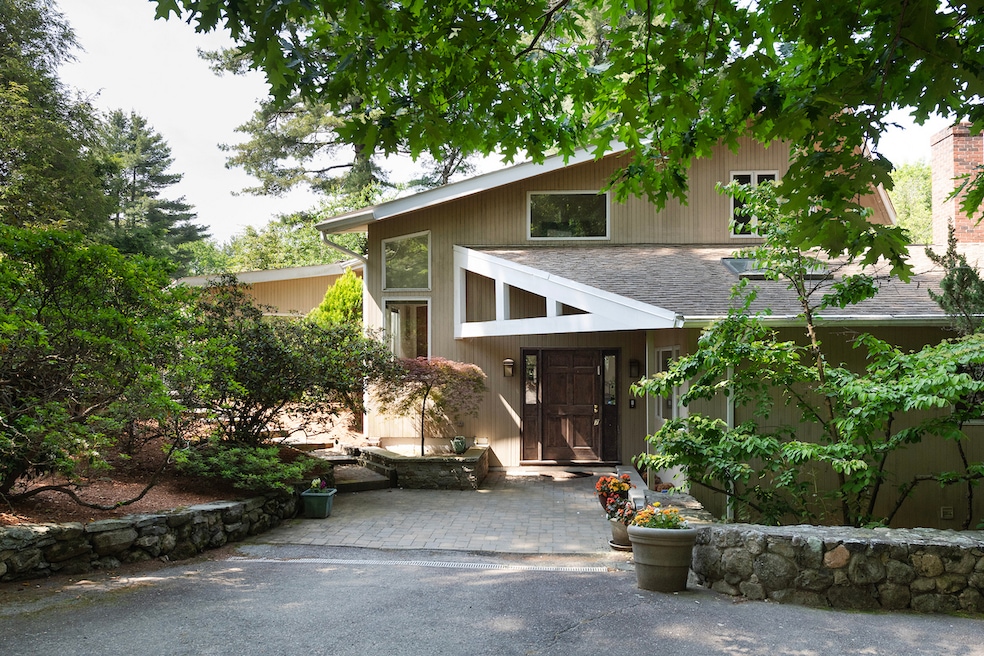The experiments began with Six Moon Hill, a neighborhood built outside of Boston to house the members of an architectural group and their families.
However, that group, called The Architecture Collaborative, found success with its development, one of the earliest modernist enclaves in Lexington, Massachusetts. So much success that the midcentury firm, led by Bauhaus founder Walter Gropius, purchased another tract of the Commonwealth’s Colonial heartland.
Started in 1951, the land became Five Fields, a speculative development that took the modernist ideals of simplified forms and communal space that TAC prioritized with Six Moon Hill and broadened them, allowing the experimental firm to refine its approach. The architects conceived the space with first-time homebuyers and small families in mind, orienting the houses around common land and a communal pool while keeping development priced low to ensure an accessible price point for buyers.


More than 70 years later, the neighborhood has about 60 residences, one of which is currently on the market for $2.54 million. Located at 7 Field Road, the six-bedroom, L-shaped property encompasses 3,785 square feet and showcases how owners have adapted these experimental homes in the decades since their initial completion.
Originally, the Five Fields houses were small but variable. TAC experimented with open floor plans, novel massing, roof shapes and post-war materials, explained Bill Janovitz, a broker with Compass who has the listing along with John Tse. In addition to vertical shiplap — a play on the horizontal cladding associated with traditional New England homes — the homes boasted open spaces and details including Hope Windows, or “steel-framed casement crank outs,” Janovitz said. “Some of the most innovative use of materials was this ability … to make big walls of glass,” he said, giving the home its characteristic floor-to-ceiling glazing.
TAC’s embrace of innovative materials was fitting for eventual homeowners: “Many of these people were working in these … new defense contractors and technology firms,” Janovitz explained. Some homebuyers came directly from universities such as the Massachusetts Institute of Technology, traveling along Route 128, a thoroughfare dubbed "America’s Technology Highway in the ‘70s and ‘80s,” Janovitz said.


“These were new ways of designing and building homes,” Janovitz said. “The idea was about modularity, so that’s why the houses can be added on to pretty easily.”
The midcentury home at 7 Field was expanded and remodeled in 2002. After purchasing the residence in the 1990s, the seller, who is downsizing, more than doubled the home’s square footage, attaching a new wing to the residence and updating appliances throughout the house. A central foyer knits the old wing — which contains an updated kitchen and family room — together with the new expansion. There, visitors can find a formal dining room, a living room, a primary bedroom and an office.
“In terms of modifying them, especially in Five Fields, you pretty much have carte blanche if it’s within the town regulations,” Janovitz said. “The town doesn’t so much regulate historic consistency as much as the architectural consistency.” Putting a silo or turret, for example, atop these modernist homes would be a no-go. Aside from that, a buyer can update the home — which needs some run-of-the-mill maintenance, including a repitched gutter and air conditioning improvements — to match their tastes.

After listing the house in late June for $2.88 million and getting little buyer response, the sellers dropped the price by $340,000 to better suit a cooling market made cautious by macroeconomic forces and changing political winds.
“We found that the market generally around the Boston suburbs is getting a little tentative compared to early in the spring as they see different forces,” Janovitz noted. “People are afraid. There are a lot of academics, there are a lot of labs, a lot of biotech, and these are the people that are investing in the town.” But, with uncertainty over federal funding bleeding into the atmosphere, some of those investors are moving carefully.
Dropping the price seems to have done the trick. “We’ve seen an immediate reaction,” Janovitz said.
